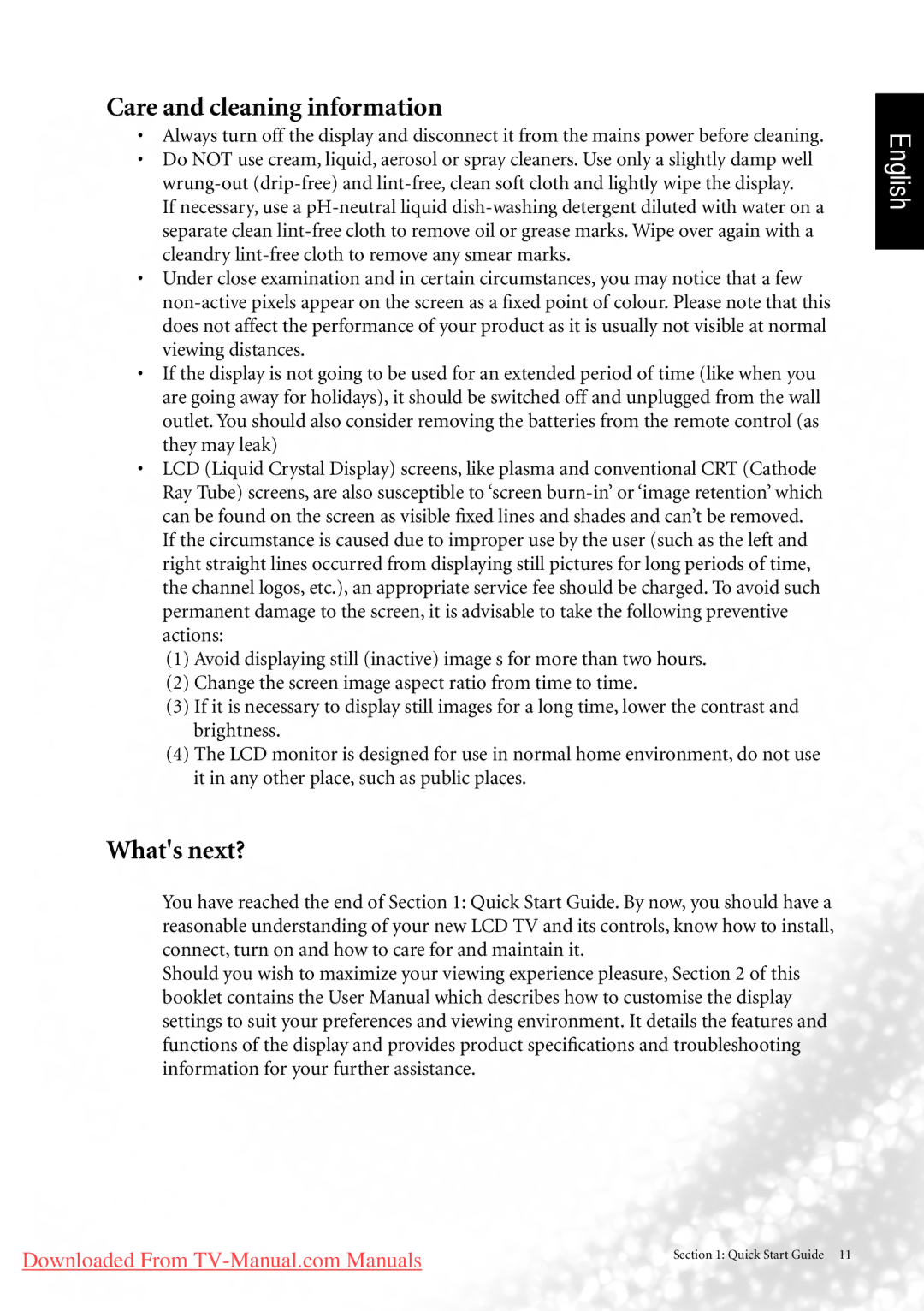
Care and cleaning information
•Always turn off the display and disconnect it from the mains power before cleaning.
•Do NOT use cream, liquid, aerosol or spray cleaners. Use only a slightly damp well
If necessary, use a
•Under close examination and in certain circumstances, you may notice that a few
•If the display is not going to be used for an extended period of time (like when you are going away for holidays), it should be switched off and unplugged from the wall outlet. You should also consider removing the batteries from the remote control (as they may leak)
•LCD (Liquid Crystal Display) screens, like plasma and conventional CRT (Cathode
Ray Tube) screens, are also susceptible to ‘screen
(1)Avoid displaying still (inactive) image s for more than two hours.
(2)Change the screen image aspect ratio from time to time.
(3)If it is necessary to display still images for a long time, lower the contrast and brightness.
(4)The LCD monitor is designed for use in normal home environment, do not use it in any other place, such as public places.
What's next?
You have reached the end of Section 1: Quick Start Guide. By now, you should have a reasonable understanding of your new LCD TV and its controls, know how to install, connect, turn on and how to care for and maintain it.
Should you wish to maximize your viewing experience pleasure, Section 2 of this booklet contains the User Manual which describes how to customise the display settings to suit your preferences and viewing environment. It details the features and functions of the display and provides product specifications and troubleshooting information for your further assistance.
English
Downloaded From
Section 1: Quick Start Guide 11
